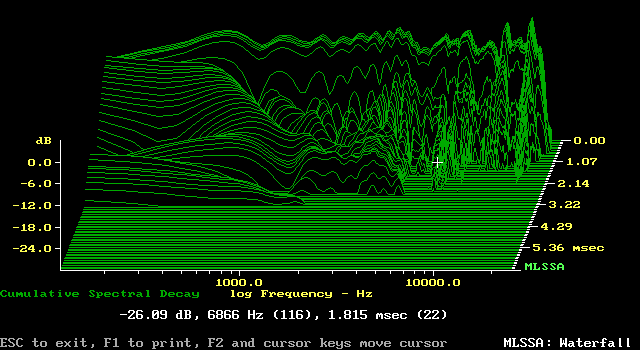Justice Strike
100+ Head-Fier
- Joined
- Jan 25, 2008
- Posts
- 379
- Likes
- 12
I've seen a lot of graphs containing info on response, ohms etc.. etc.. etc..
but i have not seen any waterfall graphs which show that a speaker is fast or not. All is based on hearing. Why is it that nobody doing a review bothers with these graphs?
here is an example:

in a nutshell the graph shows how fast sounds die off for specific frequencies. Obviously, the faster the better.
but i have not seen any waterfall graphs which show that a speaker is fast or not. All is based on hearing. Why is it that nobody doing a review bothers with these graphs?
here is an example:

in a nutshell the graph shows how fast sounds die off for specific frequencies. Obviously, the faster the better.




